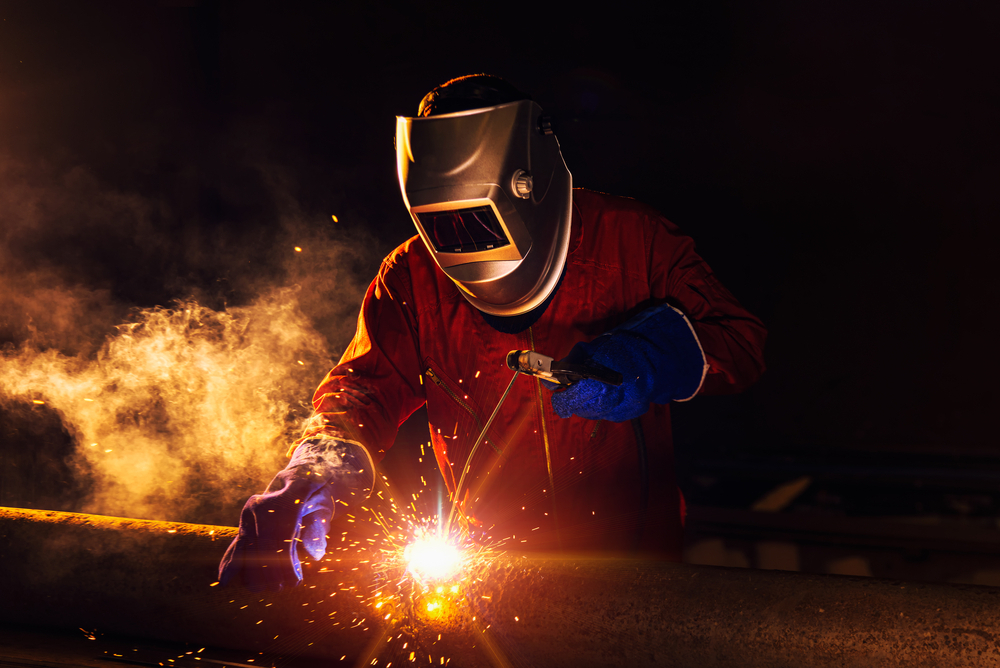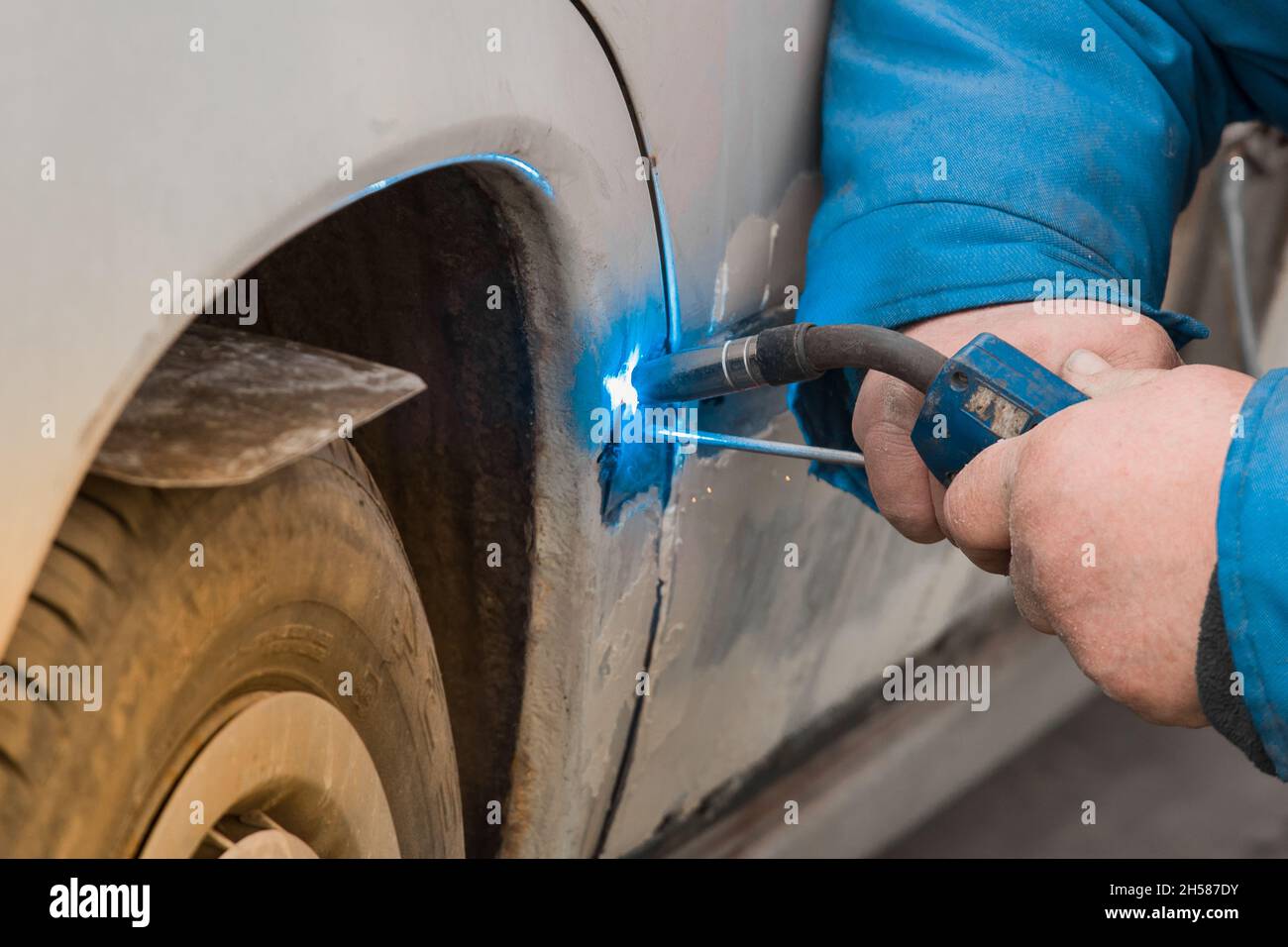All Regarding Welding: Secret Insights Into Techniques and Ideal Practices for Success
Welding encompasses a range of techniques, each suited for particular materials and applications. Comprehending these techniques, such as GMAW, SMAW, and TIG, is vital for accomplishing excellent results. Moreover, the right equipment and security techniques can not be overlooked. As prep work and repairing play important duties in the welding process, understanding these components can substantially improve the quality of the last item. What are the key elements that guarantee an effective weld?
Understanding Different Welding Methods
Welding techniques include a selection of approaches, each fit to certain applications and products. Among the most common strategies are Gas Metal Arc Welding (GMAW), Secured Metal Arc Welding (SMAW), and Tungsten Inert Gas Welding (TIG) GMAW, additionally called MIG welding, is prominent for its speed and convenience, making it excellent for thin materials. SMAW, or stick welding, is preferred for its simpleness and performance in outside environments, specifically with thicker metals. TIG welding provides precision and control, making it ideal for detailed work and non-ferrous metals (Belgrade Welding). Each method has its special benefits and considerations, permitting welders to select the best technique based upon the project's requirements, material kind, and preferred results. Recognizing these methods is important for effective welding
Crucial Welding Equipment and Tools
While various welding strategies call for specific abilities, the appropriate devices and devices are equally important for attaining top quality results. Important welding tools consists of welding devices, which differ relying on the technique-- such as MIG, TIG, or stick welding. Safety equipment, consisting of headgears, aprons, and gloves, guarantees security and convenience throughout the procedure. Furthermore, clamps and components help secure materials in position, making sure precision in welds. Consumables like welding poles, wire, and shielding gas are likewise important parts that affect the top quality of the weld. Devices such as cutters and mills facilitate surface area prep work and post-weld completing, adding to a professional end result. Buying premium equipment ultimately enhances the effectiveness and efficiency of welding projects.
Safety And Security Practices in Welding
Correct security practices are vital in the welding industry to shield employees from possible threats. Welders should use appropriate individual protective tools (PPE), including helmets with appropriate shading, gloves, and flame-resistant garments. Ample ventilation is essential to minimize exposure to harmful fumes and gases produced throughout the welding process. In addition, workers should be trained in the proper handling of welding tools to prevent crashes. Fire precaution, such as maintaining flammable products away from the welding location and having fire extinguishers readily available, are required. Routine inspections of tools and offices can help determine potential risks before they cause accidents. By sticking to these safety and security techniques, welders can produce a much safer working setting and minimize risks related to their profession.
Preparing Materials for Welding
Preparing products for welding is a vital step that substantially influences the quality and integrity of the last product (Montana Mobile Welding and Repair Fabrication). Correct preparation involves cleansing the surface areas to eliminate contaminants such as dirt, oil, and rust, which can compromise the weld. Methods such as grinding, fining sand, or making use of solvents are generally utilized to achieve a clean surface. Additionally, ensuring that the materials mesh snugly is necessary; voids can lead to weak welds. It's also vital to consider the alignment and positioning of the parts, as this will certainly influence the convenience of welding and the final end result. Picking the proper filler product and making sure compatibility with the base metals is vital for achieving solid, long lasting welds.
Tips for Getting High-Quality Welds
Accomplishing top quality welds calls for attention to information and adherence to finest methods throughout the welding procedure. Correct joint prep work is necessary, making certain surfaces are cost-free and clean from impurities. Choosing the appropriate filler product and welding method based on the base steels is crucial for ideal bonding. Keeping regular travel speed and angle while welding can prevent problems and advertise uniformity. In addition, regulating warmth input is necessary; excessive heat can cause bending and weakened joints. If essential, routinely checking the welds during the process enables for prompt changes. Lastly, utilizing suitable post-weld therapies, such as cleansing and stress and anxiety alleviation, can boost the sturdiness and integrity of the weld, ultimately guaranteeing a successful result.
Fixing Typical Welding Issues
Welding usually offers obstacles that can influence the high quality and stability of the final item. Typical issues such as porosity, inconsistent weld beads, and overheating can emerge, each needing specific repairing techniques. Comprehending these troubles is essential for welders to enhance their abilities and achieve perfect results.
Porosity Issues Explained
Although porosity can typically be neglected, it continues to be a critical issue in welding that can compromise the stability of an ended up product. Porosity describes the look at these guys visibility of small gas pockets within the weld grain, which can lead and deteriorate the joint to early failing. This trouble typically develops from impurities, moisture, or improper shielding gas coverage during the welding procedure. To reduce porosity, welders need to validate that the base materials are tidy and dry, make use of suitable shielding gases, and keep constant welding specifications. Regularly evaluating the equipment Read More Here and atmosphere can likewise aid determine possible concerns prior to they show up in the weld. Addressing porosity efficiently is vital for attaining solid, long lasting welds that meet top quality criteria.

Irregular Weld Beads
Irregular weld grains can significantly impact the top quality and strength of an ended up product. Different variables contribute to this concern, consisting of improper traveling speed, wrong amperage setups, and irregular electrode angles. When the welder relocates also quickly, a bead might show up narrow and do not have penetration, while relocating as well gradually can cause extreme buildup. Additionally, utilizing the incorrect amperage can lead to either undercutting or extreme spatter, both of which concession weld integrity. The welder's method, such as inconsistent torch motion, can additionally result in uneven grain appearance. To alleviate these problems, welders need to concentrate on maintaining consistent, controlled activities and making sure proper devices setups to attain uniformity in their welds. Consistency is essential to achieving solid and trusted welds.
Getting Too Hot and Warping Issues
Extreme heat during the welding process can lead to substantial getting too hot and warping concerns, affecting the structural stability of the workpiece. These problems commonly show up as distortion, which can endanger placement and fit-up, making more setting up challenging. Elements adding to overheating consist of the choice of welding parameters, such as voltage and take a trip rate, in addition to the sort of material being bonded. To minimize these problems, welders need to keep consistent traveling rate and appropriate warmth input while checking the workpiece temperature level. Additionally, pre-heating or post-weld heat treatment can help relieve tensions triggered by rapid air conditioning - Montana Mobile Welding and Repair Belgrade Fabrication. Regular evaluation and adherence to best methods are necessary in stopping overheating and guaranteeing the durability and reliability of bonded frameworks
Regularly Asked Questions
What Are the Job Opportunities in the Welding Industry?
The welding sector provides diverse occupation possibilities, including placements as welders, examiners, engineers, and educators. Specialists can operate in production, building and construction, aerospace, and automobile sectors, gaining from strong need and competitive salaries in various duties.
Exactly How Can I Enhance My Welding Rate Without Giving Up High Quality?
To boost welding speed without sacrificing high quality, one need to practice reliable strategies, keep tools, maximize settings, and improve hand-eye sychronisation. Regular training and seeking comments can also considerably add to achieving quicker, top quality welds.
What Certifications Are Available for Welders?
Numerous certifications exist for welders, including those from the American Welding Society (AWS), the National Facility for Construction Education and Study (NCCER), and numerous industry-specific companies. These qualifications boost employability and show ability efficiency.
Exactly How Does Welding Impact the Properties of Metals?
Welding influences the buildings of steels by altering their microstructure, which can lead to changes in strength, ductility, and hardness. Heat input and cooling rates throughout the procedure substantially influence these material qualities.
Can I Bonded Dissimilar Metals Together?
